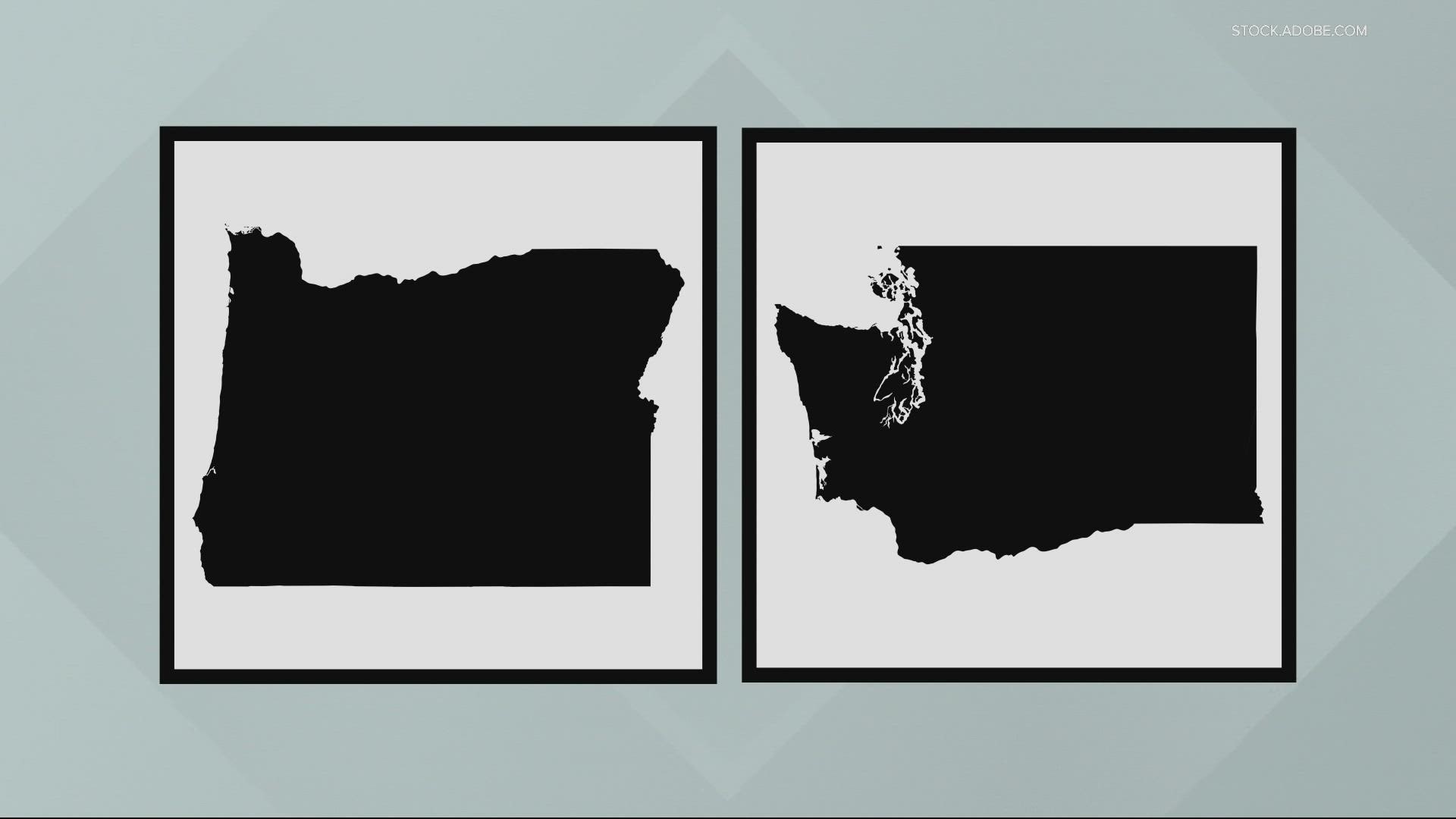PORTLAND, Ore — Before the availability of a vaccine, contact tracing was one of the highly publicized methods used to stop the spread of COVID-19 - a tool health leaders said they've used before, tracking and identifying other infectious diseases.
Health departments in Oregon and Washington tell KGW News that contact tracing and case investigation are still happening. However, the neighboring states currently approach the tactic a bit differently.
One year ago, Oregon - like many states - was in the midst of developing a COVID-19 exposure notification app, but ultimately abandoned the project months later, citing low public interest and privacy concerns.
"We didn’t think we’d get a significant extra level of protection and a tool that would significantly decrease the spread here across the state. So we put those plans on hold," said Dr. Dean Sidelinger, Health Officer and State Epidemiologist for Oregon.
By contrast, by this time last year, Washington had already launched its app, and now, it has 2.6 million users.
"It's really a great app, and it has the capabilities of changing how we're doing exposures," said Lisa DiFedele, Outbreak Coordination Lead Epidemiologist for the Washington State Department of Health.
We spoke with both experts about contact tracing and case investigation to get a better sense of how things are going at the state level.
Local public health authorities handle most of the case investigations, with state workers stepping in if and when they're called on to assist.
In Washington, 230 people work as contact tracers and case investigators for the state, compared with Oregon's 87. A spokesperson for the Washington State Department of Health said they don't have a total number of people who are doing this work, including at the local level - while the Oregon Health Authority estimates approximately 400-500 in total are doing these jobs statewide.
Washington is broadening its efforts, to increase staffing in contact tracing and case investigation efforts.
"Contact tracing is very important in trying to stop any inroads the virus may make to uninfected populations," DiFedele said, "We are still expanding our staffing – both with epidemiologists and investigatory staff – a lot of that has to do with surges that we've been seeing – the up and down of cases."
Oregon health leaders report narrowing and focusing its contact tracing methods.
"Now with fairly high levels of disease, they aren't as effective because you could be exposed and not even know it," Dr. Sidelinger said, "So our local public health partners have really focused during the recent surges on settings where there's a higher risk of spread – where people live together: skilled nursing facilities, other congregate living facilities that may have folks who are older with underlying conditions, correctional facilities, shelters, and even schools."
Both states got federal funding from the CDC - around $34 million to Oregon, and around $29 million to Washington - to prioritize, not just contact tracing - but testing in high-risk underserved communities.
Though strategies vary in preventing the spread, both DiFedele and Sidelinger said contact tracing will always have a place as long as the pandemic continues.
"What it looks like for COVID is similar to what it looks like for other diseases - so it's a tried and true method in public health," DiFedele said.
"These are important tools that help us control a virus, but they're really helpful when the virus isn't spread throughout our community," Sidelinger said.
Both agree the vaccine, and boosters, are the most important protections against COVID-19.
When it comes to the omicron variant, experts in both states say the response hasn't changed yet. They're keeping an eye on it, and while it may be more likely to easily spread, health leaders need to see if this variant causes more severe disease - which will determine whether they need to change course or amp up the response.

